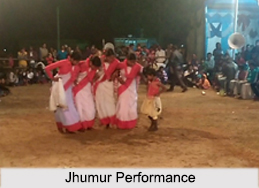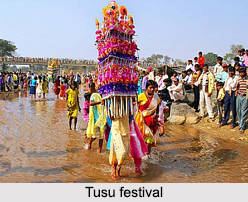 Folk Songs of Medinipur district is essentially marked by the shadows of territorial and topographical features of the state. Folk music of India generally encompasses a community-based style of music dealing with some kind of social discourse or feelings of the singer and situation. The great diversity that prevails in Indian culture and civilisation has greatly facilitated the origins and establishment of the folk style of music.
Folk Songs of Medinipur district is essentially marked by the shadows of territorial and topographical features of the state. Folk music of India generally encompasses a community-based style of music dealing with some kind of social discourse or feelings of the singer and situation. The great diversity that prevails in Indian culture and civilisation has greatly facilitated the origins and establishment of the folk style of music.
Every region of India has its own distinctive style of music. These folk songs are full of rustic charm and appeal. They have simple and touching lyrics which have an immense appeal for the rural masses. Since the dawn of civilization and its progress at Medinipur, the district of Medinipur carefully nourished a broad hybrid culture which has richly evolved over time. And with the dawning of modernity it has only grown in abundance and style.
Different Folk Songs of Medinipur District
Following are the Different Folk Songs of Medinipur District:
Gaan of Tusu festival: Tusu Gaan during the Tusu festival is largely celebrated by the Kurmi, Bhumij and Bagal communities. It generally lasts for a month like the Bhadu festival. Bhadu is illustrious in Bhadra and Tusu in Paush. Tusu is generally the most popular festival of Jhargram sub-division. As the New Year appears every year new songs are composed during Tusu parab. It is noticed that two types of song are composed for the Tusu icon, (a) Abahan (invocation) and (b) Bisarjan (immersion). And the songs are according to the day before Paush Sankranti is observed sleeplessly and the next day, on Paush Sankranti, Tusu idol is immersed in water and the songs of invocation (abahan) and immersion (bisarjan) are composed and sung with due process. Between these two events, various types of songs are also delivered.
It is noticed that two types of song are composed for the Tusu icon, (a) Abahan (invocation) and (b) Bisarjan (immersion). And the songs are according to the day before Paush Sankranti is observed sleeplessly and the next day, on Paush Sankranti, Tusu idol is immersed in water and the songs of invocation (abahan) and immersion (bisarjan) are composed and sung with due process. Between these two events, various types of songs are also delivered.
Jhumur Songs: It is an ancient folk song of Medinipur district. The lyrics of the Jhumur songs are built on day-to-day languages and chiefly portray the love and the pleasures along with the pains of day-to-day life.
Poter Gaan: The traditional folk song of Medinipur district is simple and monotonous with a single personage endeavour.
Bandhna Gaan: Bandhna is again another hugely popular domestic animals festival of Santhal, Munda, Koda, Bhumij and Mahata. This festival appears after Kali puja and stays for a fortnight. Suhana (a molasses cake) is obtainable to the cattle. Gop Astami, festival of upper class Hindus, probably has its link with Bandhna.
Shiber Gajan Gaan: Shiber Gajan is one of the popular festivals and ceremonies in Purulia that is organized in almost every villages of the particular district between March and May. Gajan songs are sung eulogizing Lord Shiva and Goddess Parvati. The dances include Natua, Bhagta, Theatre, Nanchi and Chhau accompanied by Jhumur songs and various folk songs and dances are organized. The dancers at times adorning themselves up as Hara Parvati move around the village, dancing to the rhythms of instruments like Dhol, Kanshi and Flute. At certain occasions whole night programs are held in the local villages during Gajan and often continue for days.



















